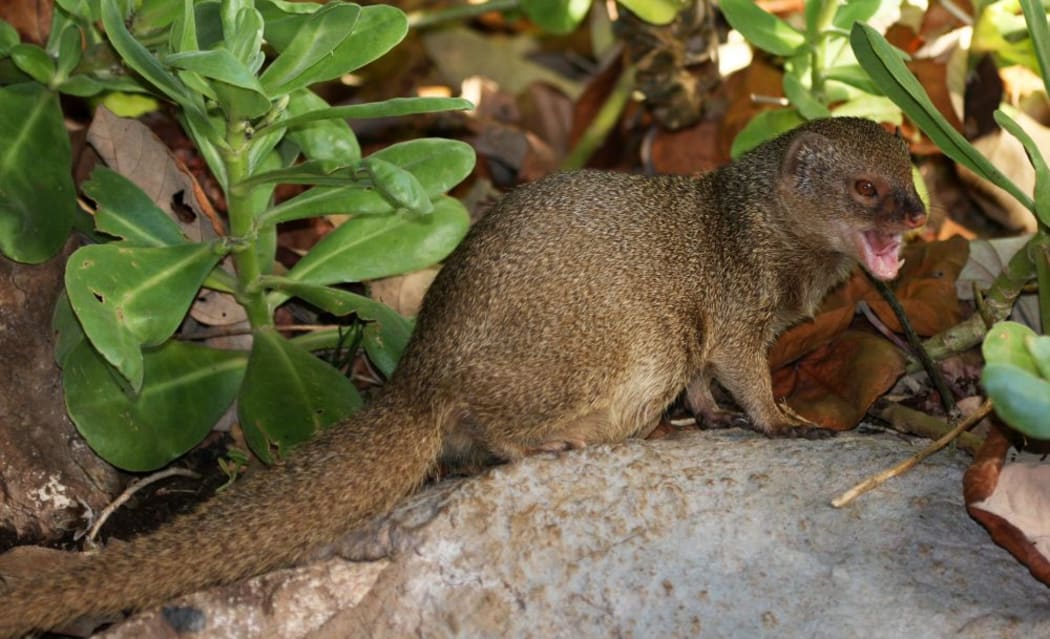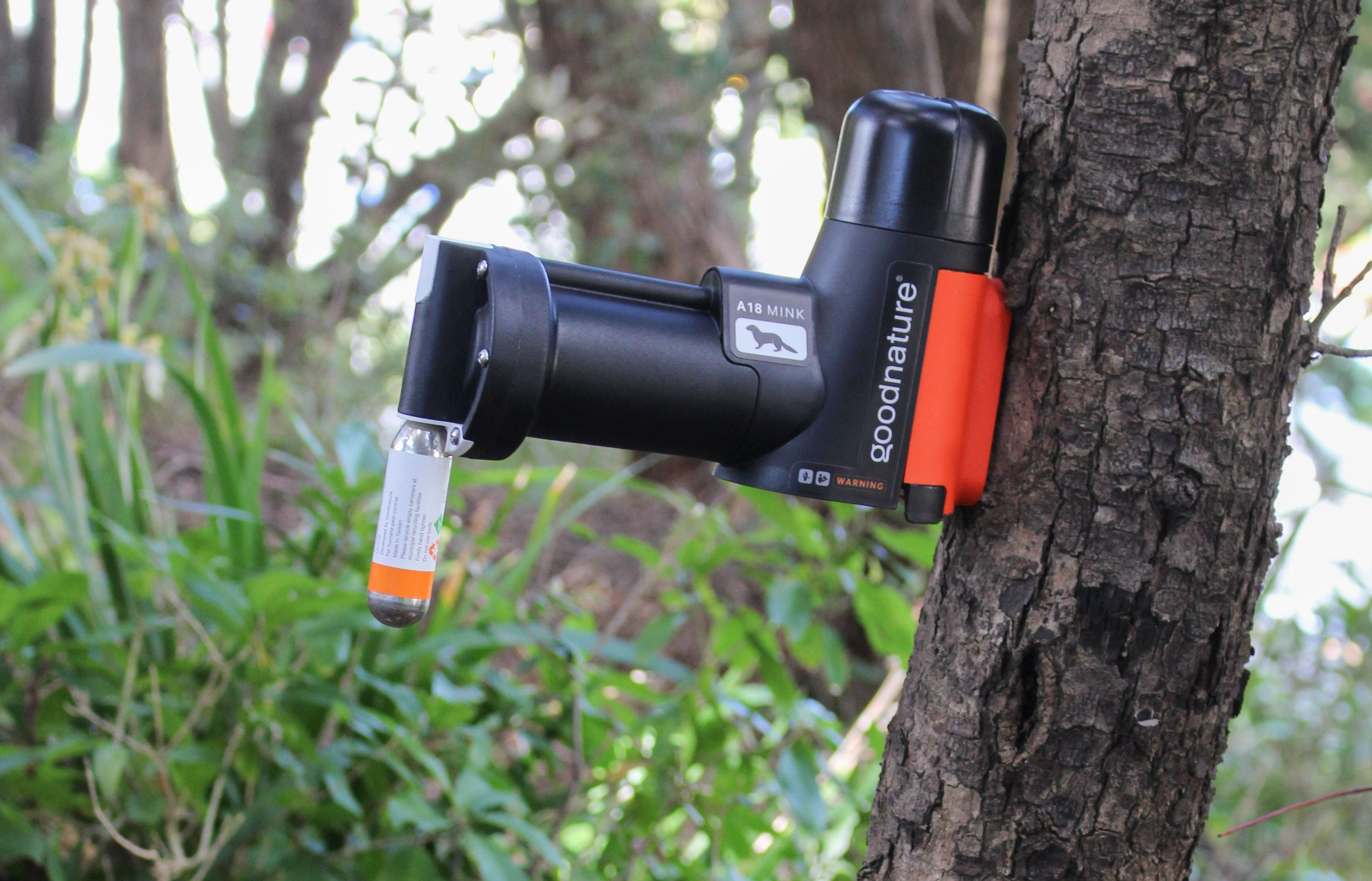A New Zealand conservation technology company is sharing its technology with those fighting the world's most dangerous invasive species.

A small Indian mongoose in Hanauma Bay, O'ahu, Hawaii. Photo: J. N. Stuart / Flickr
Goodnature has created special larger traps to deal with mongoose in Hawaii, American mink in Scandinavia and grey squirrels in the United Kingdom.
Goodnature traps are CO2-powered, self-resetting traps which can kill for up to six months before you need to replace the gas or lure.
Today, they're installing traps in Hawaii and by Friday hope to be killing mongoose, says company founder and co-director Robbie van Dam.
Mongoose are like stoats on steroids, van Dam says.
Originally introduced to Hawaii to control rats on sugar plantations, their population soon exploded and they are believed to have driven six native creatures to extinction.
“They breed much harder than stoats, can have 14 in a litter and have densities of 10 to 15 per hectare. You end up with rat proportions of this thing that can kill most things up to about six times its own weight and it can get up to 1.5 kilos.
"You imagine if that had arrived in New Zealand, we would have been destroyed, all of our bird species would be gone.”

The new Goodnature A18 trap which has been designed for both mongoose and mink Photo: Supplied/Goodnature
The population of one of our own most destructive pests – the rat – would surprise many New Zealanders, van Dam says.
A trial with three traps in his own Wellington property demonstrated the scale of the problem.
“We’re on a standard 400 square meters, surrounded by constant control by the city council, but the trap at the back in 6 months killed 18 animals. A lot of that’s mice. To catch the rats you end up killing a lot of mice.
“The one at the back was on 18, the next one was 17 and the next one was 6 – across 6 months. I never expected there might be that density.”
For more information on pest trapping in New Zealand, you can read Jesse's FAQ based on his experience of using traps in his backyard.

